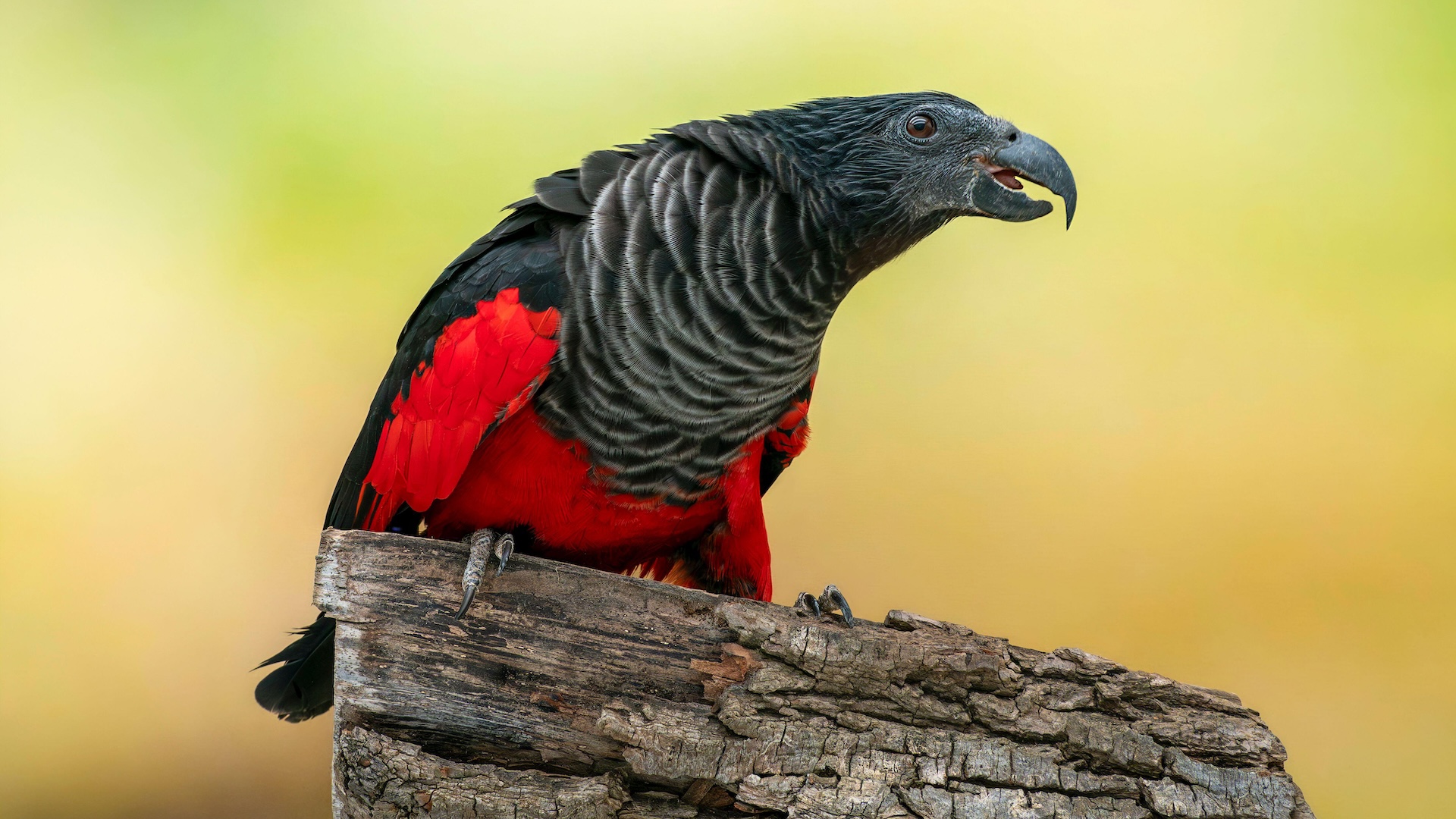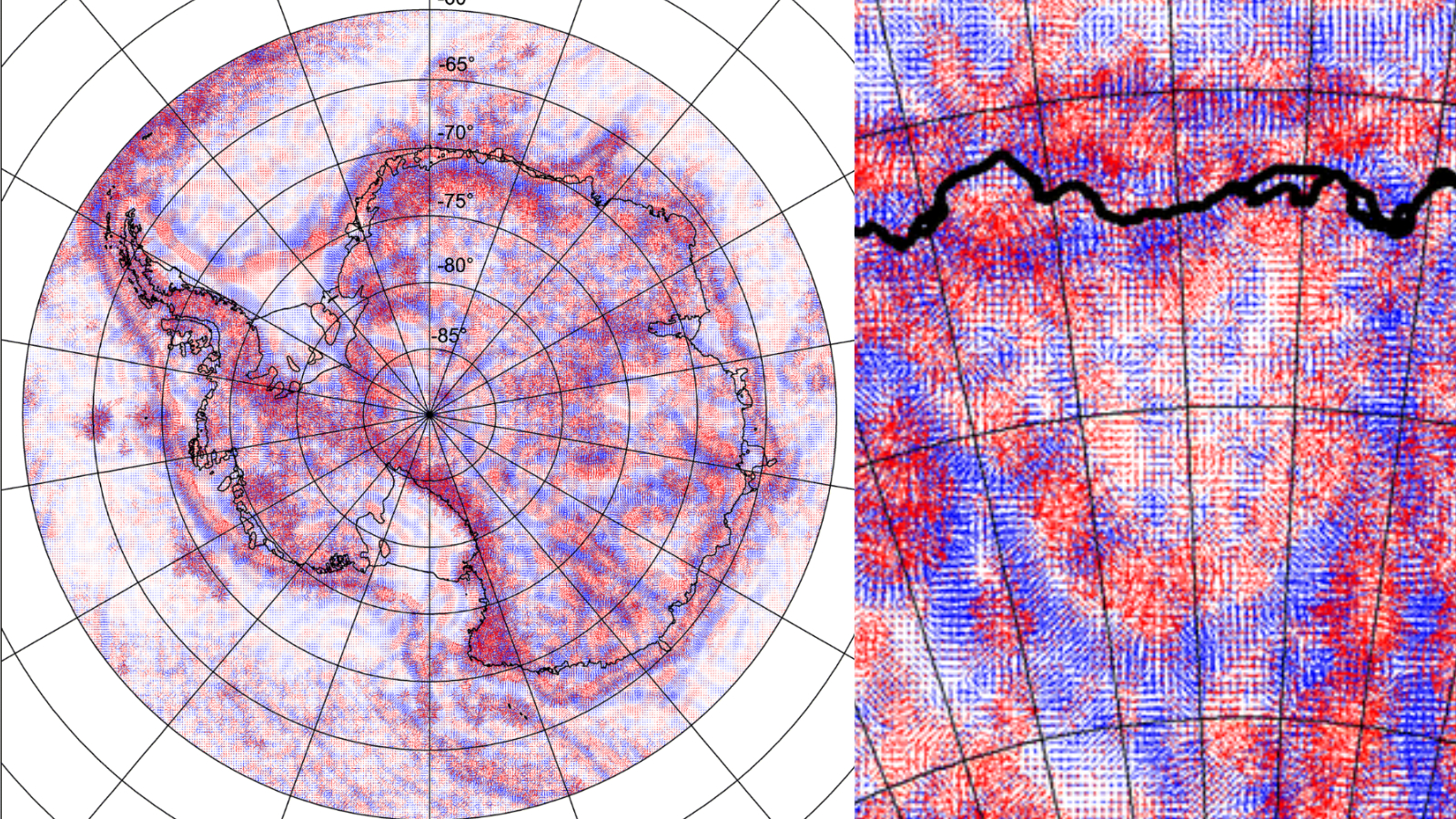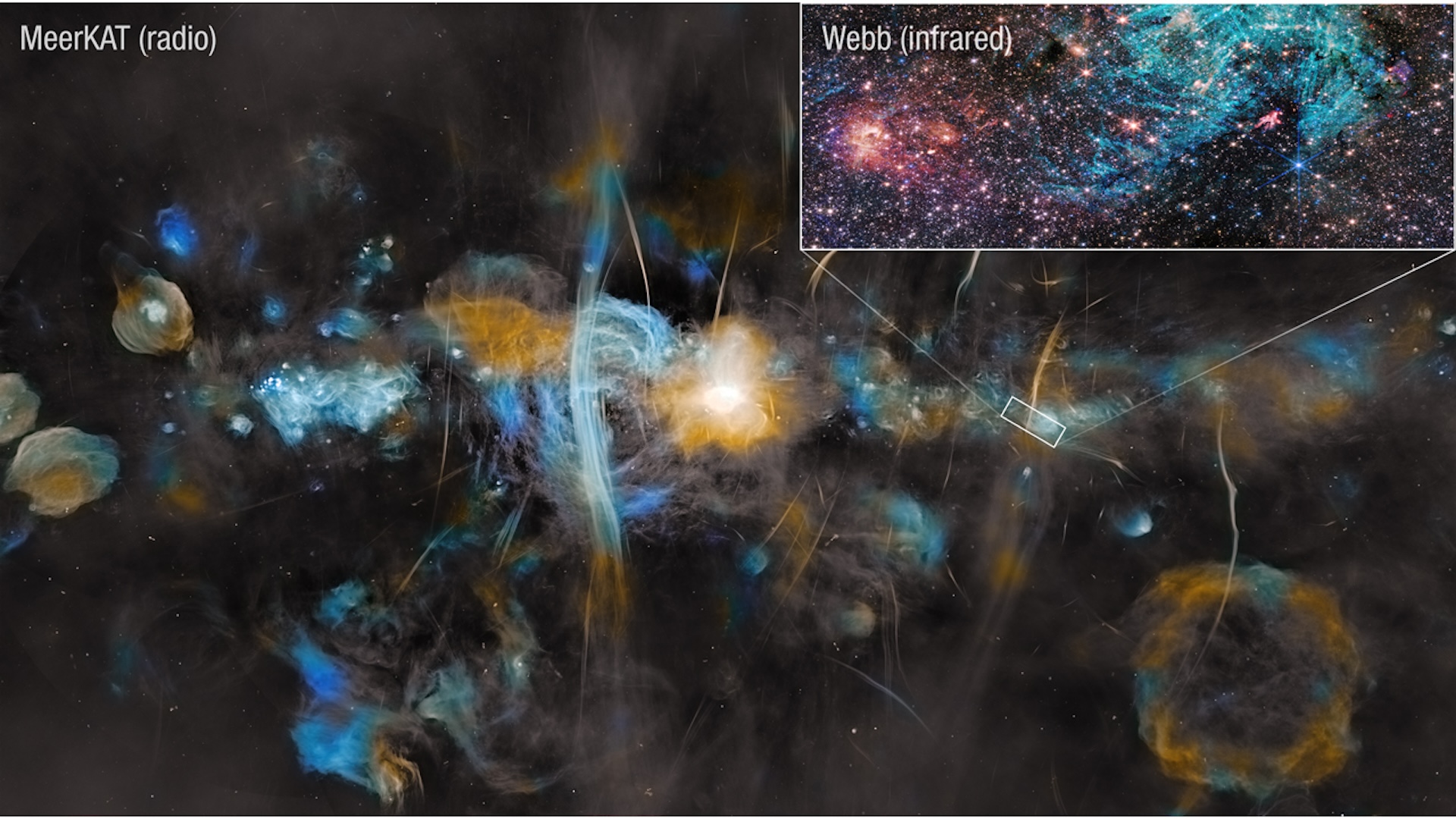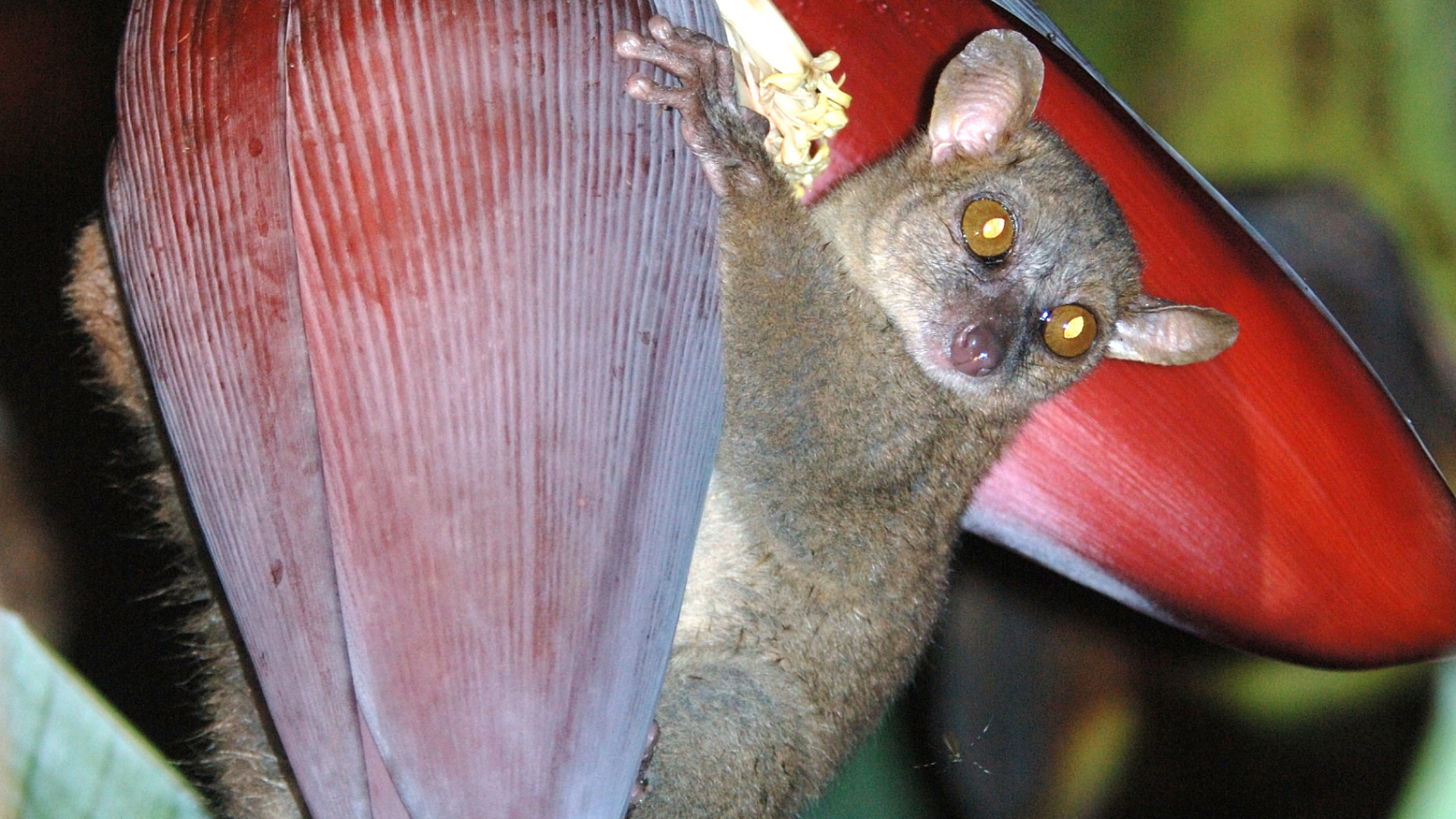Science news this week: Controversy around the dire wolf 'de-extinctions' and a 3D hologram breakthrough
April 12, 2025: Our weekly roundup of the latest science in the news, as well as a few fascinating articles to keep you entertained over the weekend.
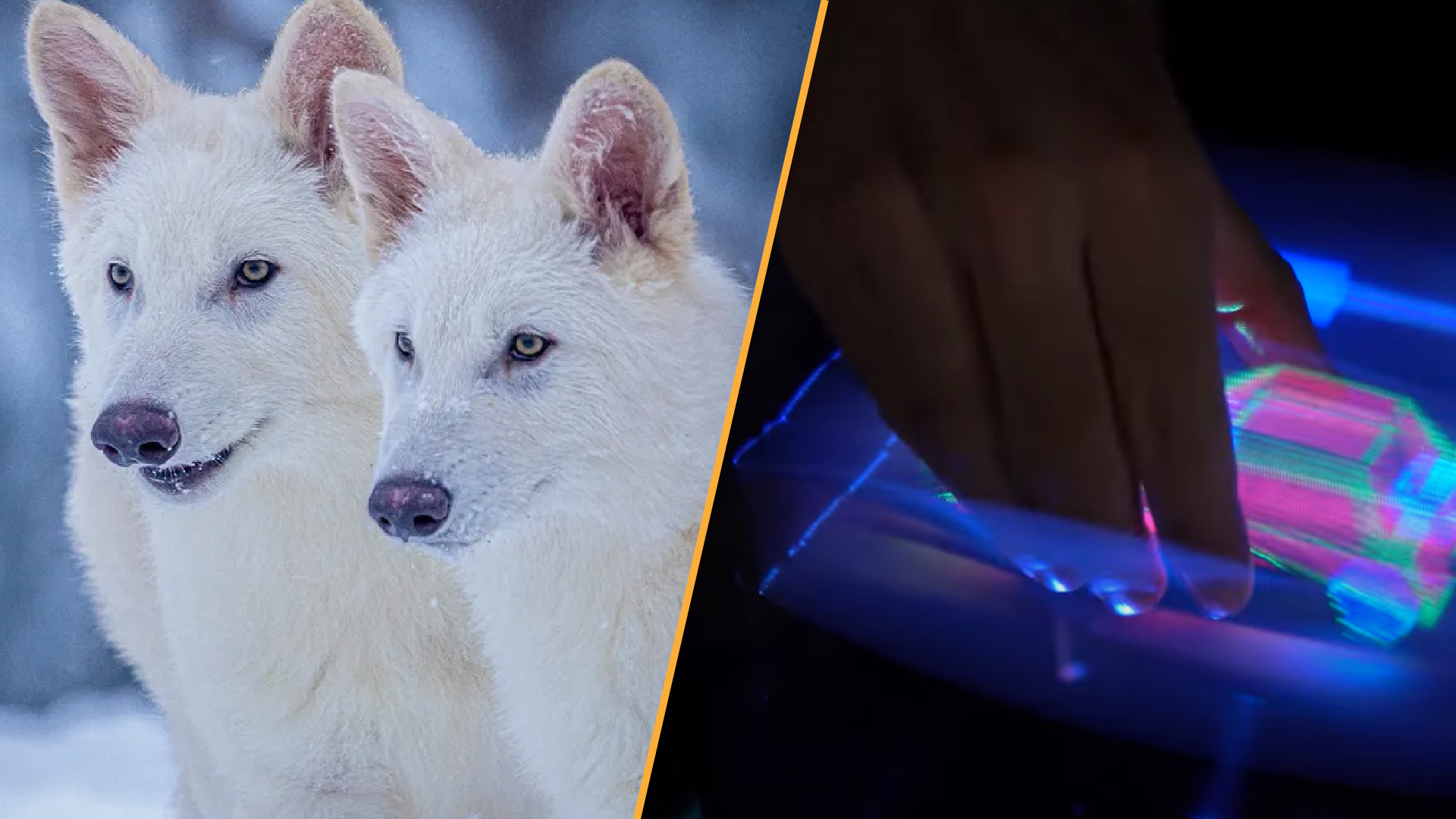
It's been quite the week for science news after biotech company Colossal Biosciences announced that it had brought back dire wolves (Aenocyon dirus) from extinction after more than 10,000 years. But do these wolf pups really count as the "world's first de-extinction," as the company claims?
The three pups — Romulus, Remus and Khaleesi — were created by genetically engineering the cells of modern-day gray wolves (Canis lupus). The researchers did this by reconstructing the dire wolf's genome from ancient DNA and identifying 20 key differences between this genetic sequence and that of the gray wolf, which the company says are responsible for the dire wolves' distinguishing characteristics.
However, while many are excited by this development, others have remained skeptical. For instance, previous genetic analysis has shown that dire wolves are not actually that closely related to gray wolves, and it is therefore unlikely that just 20 genetic tweaks would be enough to transform a gray wolf genome into that of a dire wolf. Others have questioned how these animals could ever be securely released into the wild as part of conservation efforts without negatively affecting existing animal populations.
3D holograms you can touch
In a first, breakthrough 3D holograms can be touched, grabbed and poked
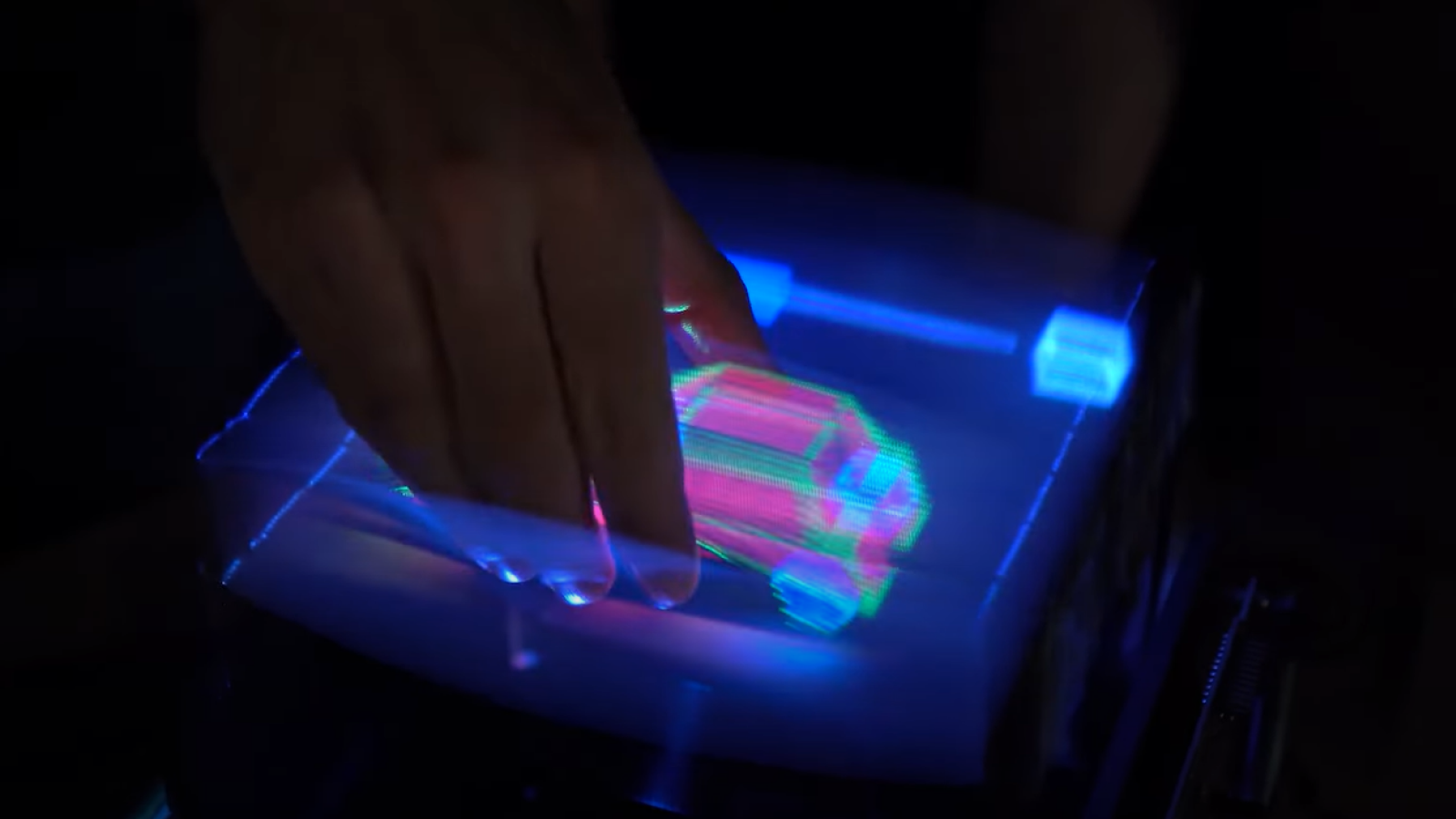
It's a staple of science fiction: a 3D hologram that we can interact with like a solid object. Now, thanks to a string of breakthroughs in mixed reality technologies, these pioneering projections might be a lot closer to reality.
In a new study, scientists revealed how using elastic materials in the displays of these holograms can enable them to be grabbed, poked and generally interacted with in a physical way.
While the technology is still in its early stages, the team hopes that it will have widespread commercial uses, including in education and entertainment.
Discover more technology news
Sign up for the Live Science daily newsletter now
Get the world’s most fascinating discoveries delivered straight to your inbox.
—AI creates better and funnier memes than people, study shows — even when people use AI for help
—Scientists reveal new hydrogen-powered 'robot horse' that could one day take you up a mountain
Life's little mysteries
What was the first alphabet in the world?

The Roman alphabet, used in English, Spanish, French and thousands of other modern-day languages, first emerged around the seventh century BC. However, humans have been writing for much longer than that — so when did our species invent alphabets, and which is the oldest alphabet in the world?
Lightning tree
Tropical tree in Panama has evolved to kill its 'enemies' with lightning
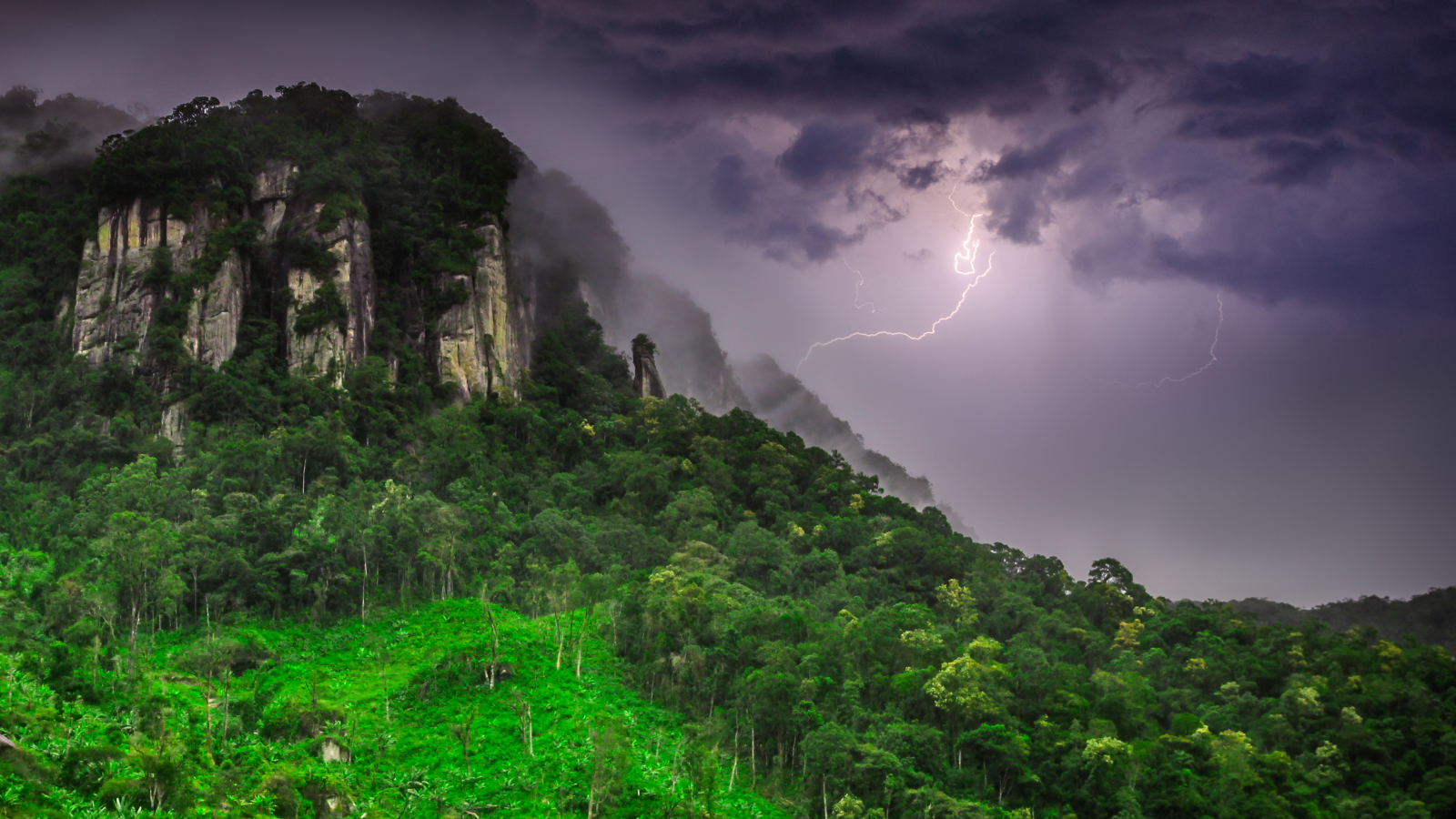
For most trees, lightning spells death and destruction. But in the lowland rainforests of Panama, one tree species may have evolved to use this force of nature to its advantage.
Scientists have known for about 10 years that tonka bean trees (Dipteryx oleifera) do not appear to succumb to the damaging blows of lightning strikes. Now, according to research, their incredible lightning resistance may give them an advantage in busy forest canopies — by enabling them to survive direct lightning strikes that kill off their nearby competition.
The researchers say this is likely down to their large structure and high internal conductivity, enabling lightning current to flow through them without building up damaging heat that would kill most other trees.
Discover more planet Earth news
—Scientists say these North American rivers 'shouldn't exist.' Here's why they do.
—Winter sea ice cover lowest in 47-year satellite record
—The North Pole could wander nearly 90 feet west by the end of the century
Also in science news this week
—Strange altar found at Tikal wasn't made by the Maya — and it has at least 4 people buried inside it
—'Starving cannibalistic spiders won't hunt their siblings, but they'll quickly dine on their corpses
—6,500-year-old hunting weapons found in Texas cave are among the oldest known in North America
—Titanic virtual reconstruction sheds light on fateful night the ship tore apart
String theory and dark energy
Scientists claim to find 'first observational evidence supporting string theory,' which could finally reveal the nature of dark energy

In 1998, two independent teams of scientists discovered that, contrary to previous predictions, the universe's expansion was not slowing down but was instead accelerating. This acceleration implied the presence of a mysterious entity that we now know as dark energy.
For decades, dark energy and its origins have remained elusive. A popular theory suggests that dark energy arises from quantum fluctuations in the vacuum of space. However, when applied to mathematical models, this idea fails to explain the expansion rate of the universe.
Now, scientists have turned to string theory — a quantum theory of gravity that treats elementary particles as tiny, vibrating, one-dimensional objects called strings — to solve this puzzle. These so-called strings give rise to different particles depending on the way they are vibrating, including gravitons — the hypothetical quantum carrier of gravity.
By basing their calculation on this quantum theory, scientists have determined that space-time itself is inherently quantum in its behavior. And one of the most striking consequences of these assumptions is that they naturally lead to an acceleration of universe expansion.
The study is still awaiting peer-review, but the authors claim that their model may provide "the first observational evidence supporting string theory."
Something for the weekend
If you're looking for something a little longer to read over the weekend, here are some of the best long reads, book excerpts and interviews published this week.
—Scientific research is the lifeblood of our economy. Now, a wrecking ball has come.
—Origins of schizophrenia linked to epigenetics of the placenta
—These strange, hybrid Earth lifeforms could survive on Mars, new study hints
Something for the skywatchers
April's full 'Pink Moon' rises this weekend — here's how to see it, and why it's so special

On Saturday, April 12, look east at dusk to see the next full moon rise into the sky at dusk. The "Pink Moon" will also be relatively small in the sky, making it a "micromoon".
Science in pictures
Incredible photo shows supermassive black hole blowing a jet of matter into interstellar space
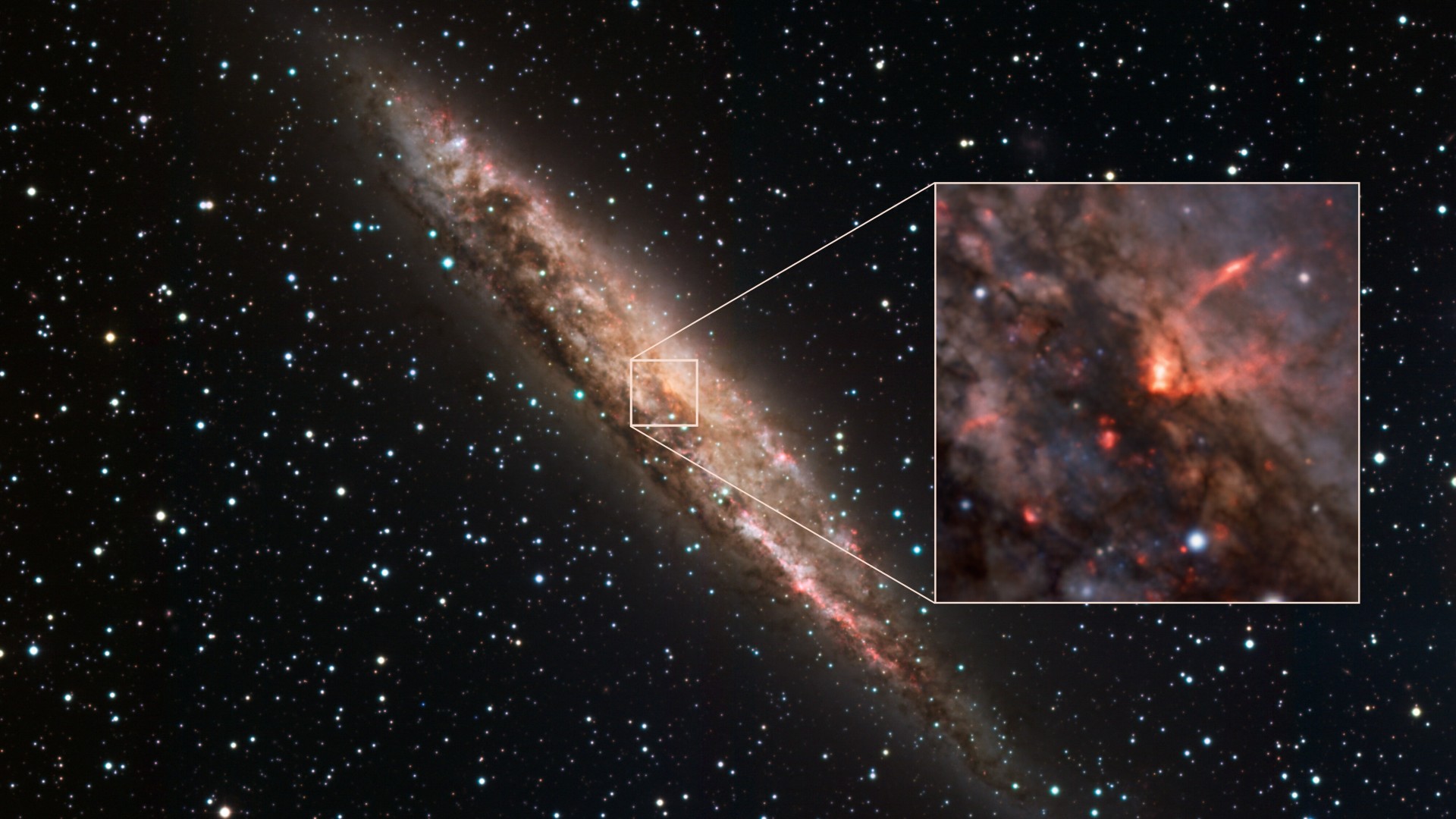
12 million light-years from Earth lies a distant galaxy, at whose heart lies a very messy eater. Observations by the European Southern Observatory's (ESO) Very Large Telescope in Chile have found that the supermassive black hole at the center of the spiral galaxy, known as NGC 4945, is incredibly active, consuming huge amounts of matter and leaving a messy trail of "scraps" strewn across space by fast winds.
In the image above, these galactic winds can be seen as bright, cone-shaped jets escaping from the center of the spiral galaxy.
Follow Live Science on social media
Want more science news? Follow our Live Science WhatsApp Channel for the latest discoveries as they happen. It's the best way to get our expert reporting on the go, but if you don't use WhatsApp, we're also on Facebook, X (formerly Twitter), Flipboard, Instagram, TikTok, Bluesky and LinkedIn.

Pandora is the trending news editor at Live Science. She is also a science presenter and previously worked as Senior Science and Health Reporter at Newsweek. Pandora holds a Biological Sciences degree from the University of Oxford, where she specialised in biochemistry and molecular biology.
You must confirm your public display name before commenting
Please logout and then login again, you will then be prompted to enter your display name.
